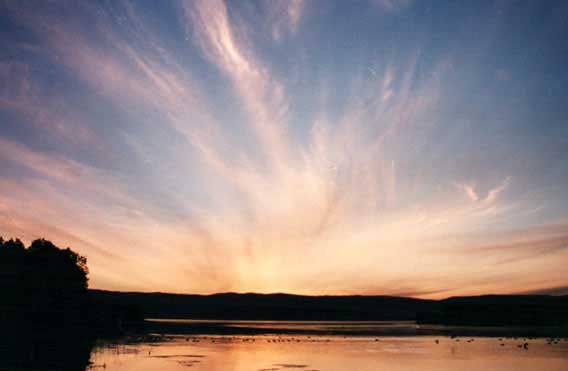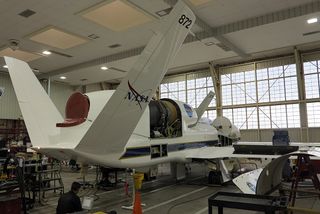
Water Leaking Into Stratosphere Could Harm Ozone

Some of the coldest air on the planet lies above the tropics. And through this cold zone, more water than expected sneaks into the higher reaches of the atmosphere, a new study finds.
Upon reaching the stratosphere, the layer of the atmosphere above the one in which we live, water vapor acts as a potent greenhouse gas and destroys the protective ozone.
"Small changes in the humidity of the stratosphere are important for climate," said Eric Jensen, lead study author and a scientist at NASA's Ames Research Center in Moffett Field, Calif.
Where the water goes
Because it's difficult to measure, scientists have been unsure how much water passes from the troposphere, the layer of Earth's atmosphere we breathe, into the stratosphere (which runs from about 6 to 31 miles, or 10 to 50 kilometers, above Earth's surface), Jensen said. At the boundary between the two zones, called the tropopause, the air is minus 120 degrees Fahrenheit (minus 90 degrees Celsius).
Researchers suspected water vapor rising into the tropopause would freeze and fall out in wispy cirrus clouds made entirely of ice crystals. In essence, they thought that the tropopause was a cold trap for water, keeping the vapor out of the stratosphere. [Infographic: Earth's Atmosphere Top to Bottom]
"That turned out to be a bit of an over-simplification," Jensen told OurAmazingPlanet.
Sign up for the Live Science daily newsletter now
Get the world’s most fascinating discoveries delivered straight to your inbox.
Flying high
In 2011, NASA sent a remote-controlled aircraft, a Global Hawk drone, on three flights through cirrus clouds high the tropical tropopause, which Jensen calls the "gateway into the stratosphere."

Large-scale convection currents in the atmosphere bring air upwards in the tropics, driving water into the stratosphere, Jensen said. Thunderstorms can also punch water (and pollutants) directly through the tropopause.
The flights were part of an ongoing science experiment called ATTREX, for Airborne Tropical TRopopause Experiment, meant to help scientists better understand the upper atmosphere and its chemistry. The aircraft can fly up to 65,000 feet (19 km) in altitude and cover a large chunk of the tropics during a 30-hour round-trip from its current base in Palmdale, Calif.
Monitoring equipment mounted on the plane revealed that tropical cirrus clouds don't remove as much water vapor as models predicted, Jensen said.
"We found this is sort of a leaky cold trap, because a lot more water is getting through," he said.
In general, clouds form when air is super-saturated — when there is more water than the air can hold (think of saturation as a relative humidity of 100 percent). But near the tropopause, there aren't enough ice crystals to quickly and effectively remove the vapor, the ATTREX flights discovered.
Water in the rising air has nothing to condense around, so some escapes into the stratosphere. The study found air crossing the tropopause with 1.6 to 1.7 times as much water as at saturation level.
The results were published online Jan. 22 in the journal Proceedings of the National Academy of Sciences.
Future ATTREX flights will also test how compounds that destroy ozone enter the atmosphere, Jensen said. Gaining a better idea of the amount of water vapor in the stratosphere could also help refine climate models.
"Ultimately, what we expect are improvements in the models that are used to predict climate change," Jensen said.
This story was provided by OurAmazingPlanet, a sister site to LiveScience. Reach Becky Oskin at boskin@techmedianetwork.com. Follow her on Twitter @beckyoskin. Follow OurAmazingPlanet on Twitter @OAPlanet. We're also on Facebook and Google+.












